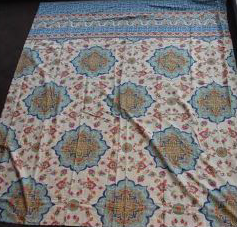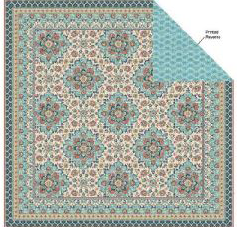A recent Federal Court decision, The Dempsey Group Pty Ltd v Spotlight Pty Ltd [2018] FCA 2016 has provided a rare example of a case where a party found to have infringed copyright was able to successfully argue that the infringement was committed innocently, and that they were accordingly not liable for damages in respect of that conduct.
Both parties had engaged the services of the same manufacturer who supplied products featuring the copyright protected work, as well as the infringing articles. This relationship was an influential factor in the Court’s decision to uphold the innocent infringement defence.
The innocent infringement defence
Where copyright infringement is established, the infringing party may be able to rely on an innocent infringement defence under s 115(3) of the Copyright Act 1968 (Cth) (Act).
In order to successfully establish the defence, the defendant must satisfy the court that he or she was not aware, and had no reasonable grounds for suspecting, that the act constituting the infringement was an infringement of copyright. This is a high threshold test as it requires proof of an active, subjective lack of awareness on part of the defendant and the court’s objective consideration that there were no reasonable grounds for the defendant to suspect infringement.
The defence only acts as a defence against a claim for damages by the copyright owner. It does not prevent courts from ordering an account of profits or any other form of relief in relation to the infringement.
The Dempsey Group Pty Ltd v Spotlight Pty Ltd is one of few cases in which the defence has been successfully raised.
The facts
The Dempsey Group Pty Ltd (Dempsey Group) and Spotlight Pty Ltd (Spotlight) both sold bed linen product ranges. The Dempsey Group sold its products in Bed Bath N’ Table stores under the Morgan & Finch brand while Spotlight sold its products in its Spotlight stores. Both parties had separately engaged the services of the same Chinese commission manufacturer, Yantai Pacific Homes Fashions (Yantai), to manufacture these products which were then imported and sold in Australia by the retailers.
The Dempsey Group alleged that Spotlight had infringed its copyright in three artistic works comprised within its ‘Rimona’, ‘Bosphorus’ and ‘Constantinople’ quilt covers and pillow sets (Dempsey Products) by knowingly instructing Yantai to manufacture products which substantially reproduced the artistic works. The products in issue are Spotlight’s ‘KOO Jarvis’, ‘KOO Remy’ and ‘KOO Taj’ quilt covers and pillow sets (Spotlight Products).
Spotlight representatives including one Ms Howitt visited the Yantai premises on 26 April 2016 to select designs to be incorporated into the Spotlight Products. It was on this visit that the Dempsey Group alleged Spotlight was put on notice by Mr Chen, a Yantai representative, that the designs they chose were copyright works belonging to the Dempsey Group, but chose to disregard the issue.
The products of both parties are shown below.
| Spotlight Quilt Covers | Dempsey Works |
| KOO Remy | Bosphorus |
 |
 |
| KOO Jarvis | Rimona |
 |
 |
| KOO Taj | Constantinople |
 |
 |
The issues
The Dempsey Group alleged that Spotlight’s actions in importation and selling the Spotlight Products were an infringement of its copyright, pursuant to sections 37 and 38 of the Act.
In order to determine this question, the Court was required to consider multiple issues which included:
- Whether the Spotlight Products substantially reproduced parts of the Dempsey Group’s artistic works so as to constitute infringement;
- Whether Spotlight had actual or constructive knowledge that the importation and sale of the Spotlight Products in Australia constituted infringement of the Dempsey Group’s copyright; and
- If infringement was established, the damages to be awarded to the Dempsey Group.
The decision
The Court made the following findings :
- Spotlight Products substantially reproduced the Dempsey Group’s artistic works.
Spotlight argued that the Dempsey Group had failed to precisely identify the manner in which the Spotlight Products substantially reproduced the Dempsey Group’s works. It argued that the Dempsey Group was trying to stretch copyright to protect the idea of its products by asserting Spotlight’s substantial reproduction in the look and feel of its artistic works.
Spotlight submitted that there were significant differences between the Spotlight and Dempsey Products. For example, in relation to the Dempsey Group’s ‘Rimona’ product and Spotlight’s ‘KOO JARVIS’ product, Spotlight argued that its product design did not contain the bird motifs and floral background which were present in the ‘Rimona’ product. In addition, the ‘KOO JARVIS’ design was in a different shade of teal and lacked the fourth exterior border which was present in the ‘Rimona’ work.
The Court rejected Spotlight’s arguments and held that all three Spotlight Products had substantially reproduced the Dempsey Group’s artistic works. Referring to cases such as Seafolly Pty Ltd v Fewstone Pty Ltd [2014] FCA 321, the Court found that it was unnecessary to have both works bear substantial resemblance nor was it appropriate to dissect the copyright work piecemeal and focus on the differences.
- Spotlight had no prior actual or constructive knowledge before 2 December 2016.
The Court was not persuaded that Spotlight was put on notice that there may have been a breach of copyright and ought to have made further inquiries prior to 2 December 2016 when it received documents supporting the Dempsey Group’s proof of ownership.
Evidence given by Mr Chen, the Yantai representative, was deemed unreliable and could not be used to establish Spotlight had actual knowledge that the samples it used were based on Dempsey Products. In addition, Spotlight had a long established business relationship with Yantai and it often relied on Yantai to guide it as to which designs it could, or could not use. The Court also placed weight on the behaviour of Ms Howitt who chose to cancel orders for the designs supplied by Yantai in the past when she was alerted to the fact that the designs had copyright owned by third parties attached to them.
However, the Court did find that, after 2 December 2016, Spotlight had known, or ought reasonably to have known that the sale of the Spotlight Products would infringe the Dempsey Group’s copyright.
- Substantially lower damages to be awarded to the Dempsey Group.
In determining remedies to be awarded, the Court held that Spotlight had the benefit of the innocent infringement defence in relation to the sale of Spotlight Products up to 2 December 2016. The Court was of the opinion that it was reasonable for Spotlight to rely on Yantai as the manufacturer and source of the design material and with whom it had a long established business relationship, to inform Spotlight which samples were protected by copyright, and could not be copied.
This meant that the Dempsey Group was restricted to claim an award of damages for infringement which occurred after 2 December 2016. The damages awarded were also significantly reduced as the Dempsey Group provided little evidence to substantiate the amounts it originally claimed.
Conclusion
Although the innocent infringement defence was successfully raised here, it was an unusual situation and does not provide a general indication that copyright infringers will escape the consequences of infringement. The success of the defence in this case centred on the long established business relationship between Spotlight and Yantai. This relationship made it reasonable for Spotlight to rely on Yantai’s guidance to identify potential copyright issues relating to the design samples. Where there is no such relationship, it makes it unlikely that the courts will uphold the innocent infringement defence. Therefore, it remains necessary for businesses outsourcing manufacturing activities to ask questions and investigate potential copyright issues along with their manufacturers or suppliers.
How can we assist?
HWL Ebsworth’s Intellectual Property team is experienced in helping businesses navigate their intellectual property obligations in and out of Australia. Feel free to contact a member of our team for further information on how we can assist you.
This article was written by Luke Dale, Partner, Daniel Kiley, Senior Associate, and Stephanie Leong, Law Graduate.
P: +61 8 8205 0580
E: lcdale@hwle.com.au
